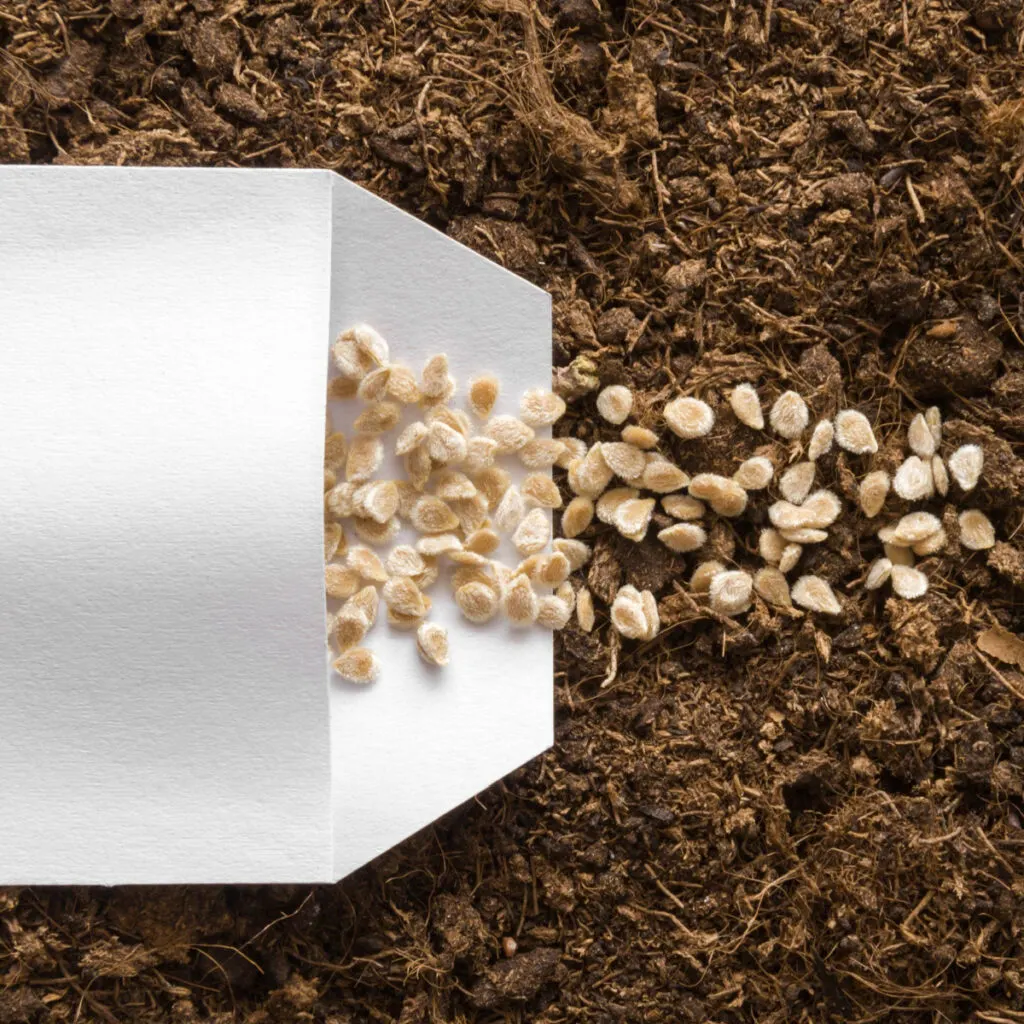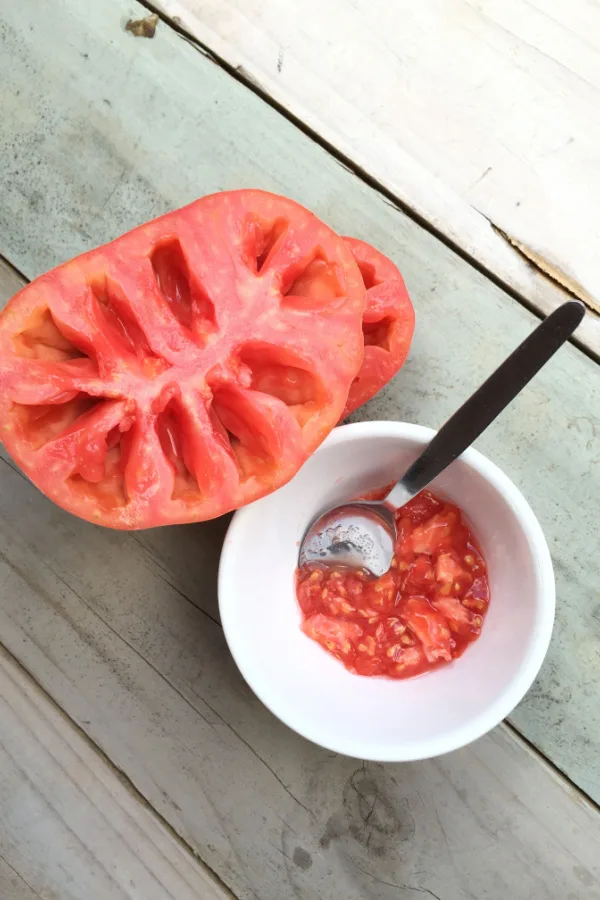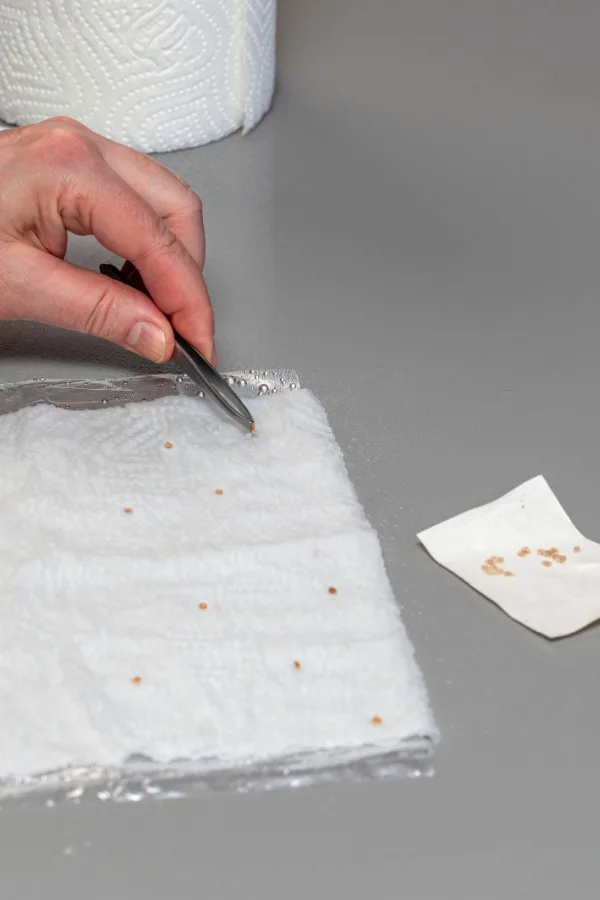Although most tomato seeds can actually be kept and saved for more than a single year, how you store those tomato seeds over the winter months can play a big role in just how well they will germinate – and how well they will grow!
It’s no secret that the price of everything has been increasing year after year – And this includes vegetable seeds. While growing tomatoes from seeds is still the best and cheapest route to take, it can still start to add up after a while.
Thankfully, any extra seeds you don’t end up sowing can be saved to plant the following year. This is especially important when planting hybrid tomato seeds that cannot be saved from the plants each year.

Most tomato seed varieties can actually be kept anywhere between 4 to 5 years before germination rates decline. That of course can be wonderful if you purchase your seeds in larger quantities. But how and where you store the seeds is extremely important in just how long they will last.
Using the wrong storage container or location can make the difference between healthy seeds and those that struggle to germinate. With that in mind, this article covers the best ways to save and store tomato seeds as well as what to avoid doing.
How To Store Tomato Seeds
These tips and suggestions can be used with any type of tomato seeds or varieties. It works whether you are storing leftover purchased seeds after planting or the seeds you saved from your favorite heirloom tomato plants this year. (See, “How To Save Heirloom Tomato Seeds”)
There are two main issues when it comes to the longevity of your tomato seeds. One is excess humidity and moisture and the other is improper temperature. Control both correctly, and your tomato seeds will be capable of staying vital for many years to come.
If either one of those issues comes into play though, your tomato seeds will quickly end up molding or dying. Thankfully, it’s fairly easy to ensure safe and proper storage.
Start With Completely Dry Seeds
The first important tip to storing tomato seeds properly is to start with dry seeds. This tip mainly deals with tomato seeds that you are saving directly from fruit. Most seeds purchased from stores come already fully dried. However, it is still important to check that there is no moisture in the seeds before storing them.

Ensure that any tomato seeds that you save directly from the plant have sufficient time to dry before storing. Depending on the method you use, that might mean allowing several weeks before the seeds are fully dry.
Spread the seeds out on a paper towel or paper plate and store them in a cool, dark location. Avoid any place where there is excess humidity. After two to three weeks, the tomato seeds should be nice and dry.
You can help speed up this drying process by storing your seeds with some of those little silica gel packets you find in new shoe boxes or in the bottom of purses and bags. The silica gel will help to remove any excess moisture from the seeds.
Choose The Right Container
As long as the seeds are dry, any container that seals completely works well for storing tomato seeds over the winter season. The container needs to be watertight while not allowing pests like mice and insects to enjoy a mid-winter snack.
If you are storing leftover purchased seeds, use the original packet they came in if possible. This will help you easily identify the seeds as well as give you the planting information.

A paper envelope or bag works great for seeds that you saved yourself. Be sure to label the seeds well with the variety as well as the date you are saving them. Include any planting instructions if needed. (Affiliate Product Link: Kraft Paper Seed Envelopes)
Some people go even further and keep their seed packets in glass canning jars with lids, empty and clean spice containers, or any other plastic or glass container with a lid. Another great option is to store the packets in a photo storage box. This container makes organizing seeds a breeze while helping to keep pests away. (Affiliate Product Link: Transparent Photo Storage Box)
Where To Keep Stored Tomato Seeds
Once your tomato seeds are properly contained and labeled, it’s time to find a place to store them over winter. The best locations are cool, dry, and dark spots in your home. A closet, garage, or even a dry basement works great for keeping seeds long-term.
You can also store seeds in deep freezers. Their lack of moisture and low temperatures are ideal for storing seeds. Just be sure to use freezer containers when saving your seeds and allow them to come to room temperature before planting.
Avoid any location that has excess moisture and heat, including cellars, sheds, or damp basements. Another spot to avoid is your refrigerator. Unfortunately, refrigerators contain too much moisture which can quickly damage improperly sealed seeds.
Check The Germination Rate
If you are concerned about the vitality of your stored tomato seeds, you can perform a simple germination test. You will need 10 seeds, a paper towel, a small spray bottle of water, and a plastic ziplock bag.

Dampen the paper towel and place 10 seeds on the bottom half. Fold the other half over so the seeds are in between the layers of paper towel. Place it carefully in a plastic bag and seal it. Keep the bag in a warm location where it can sit undisturbed for several days.
Check the paper towel daily to make sure it stays moist. If it is starting to dry out, give it a light spray of water. You do not want it soaking wet though since this will cause the seeds to mold.
Find Your Germination Rate
The tomato seeds should start to germinate in around 6 to 8 days. After 10 days have passed, check the seeds and count how many germinated. If 6 of your seeds sprout, then your germination rate is 60% (6 out of 10 seeds).
As long as your germination rate is above 50%, you should have success sowing your saved seeds. If it is less than 50%, try the germination test again. If the same results occur, it’s probably time for a new batch of seeds. Keep in mind that even seed companies do not typically guarantee a 100% germination rate on brand-new seeds.
As long as you follow these simple tips, you should have no issues storing your tomato seeds over the winter season – and beyond!
Follow Our Facebook Page For Even More Great Tomato Growing Tips! I Grow Tomatoes Facebook Page
I Grow Tomatoes is a website created for those who love all things about tomatoes – from planting and growing – to cooking and canning! We publish two articles every week, 52 weeks a year. Sign up today to follow via email! This article may contain affiliate links.
